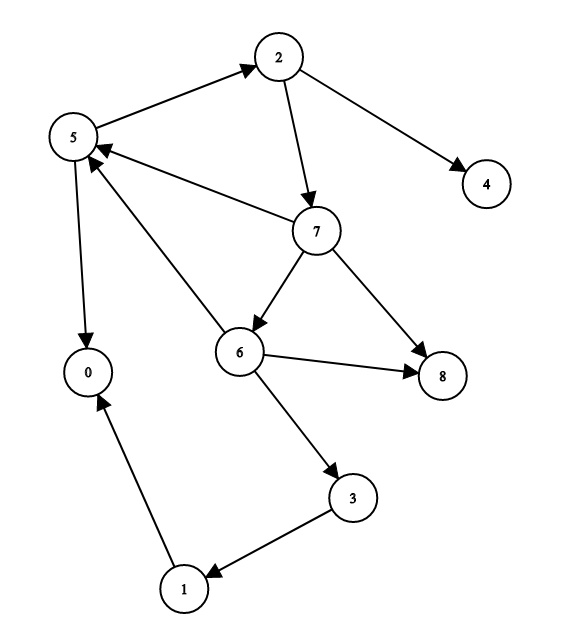学习笔记之图的遍历
学习笔记之图的遍历
Model
package dfs; |

深度优先遍历
从图中某个顶点V出发,访问该顶点,然后从V的未被访问的邻接点出发递归比那里,直到和V有路径连通的所有顶点都被访问到。
然而对于非连通图,在选定一个顶点进行深度优先遍历后,若图中还有顶点未被访问,则选择图中一个未被访问的顶点作为起始点,重复上述过程,直到图中所有顶点都被访问到为止。
package dfs; |
广度优先遍历
类似树的层序遍历,借助队列。
package bfs;
import java.util.LinkedList;
public class BFS {
private Graph graph;
private Graph.Node start;
public BFS(Graph graph, Graph.Node start) {
this.graph = graph;
this.start = start;
}
public void bfs() {
LinkedList<Graph.Node> queue = new LinkedList<>();
queue.add(start);
while (!queue.isEmpty()) {
Graph.Node node = queue.removeFirst();
if (node.visited) {
continue;
}
node.visit();
System.out.print(node.name + " ");
LinkedList<Graph.Node> allNeighbors = graph.adjacencyMap.get(node);
if (allNeighbors == null) {
continue;
}
for (Graph.Node neighbor: allNeighbors) {
if (!neighbor.visited) {
queue.add(neighbor);
}
}
}
}
public static void main(String[] args) {
Graph graph = new Graph(true);
Graph.Node zero = new Graph.Node(0, "0");
Graph.Node one = new Graph.Node(1, "1");
Graph.Node two = new Graph.Node(2, "2");
Graph.Node three = new Graph.Node(3, "3");
Graph.Node four = new Graph.Node(4, "4");
Graph.Node five = new Graph.Node(5, "5");
Graph.Node six = new Graph.Node(6, "6");
Graph.Node seven = new Graph.Node(7, "7");
Graph.Node eight = new Graph.Node(8, "8");
graph.addEdge(one,zero);
graph.addEdge(three,one);
graph.addEdge(two,seven);
graph.addEdge(two,four);
graph.addEdge(five,two);
graph.addEdge(five,zero);
graph.addEdge(six,five);
graph.addEdge(six,three);
graph.addEdge(six,eight);
graph.addEdge(seven,five);
graph.addEdge(seven,six);
graph.addEdge(seven,eight);
BFS bfs = new BFS(graph, two);
bfs.bfs();
}
}
package bfs; |
https://stackabuse.com/graphs-in-java-depth-first-search-dfs/
https://stackabuse.com/graphs-in-java-breadth-first-search-bfs/